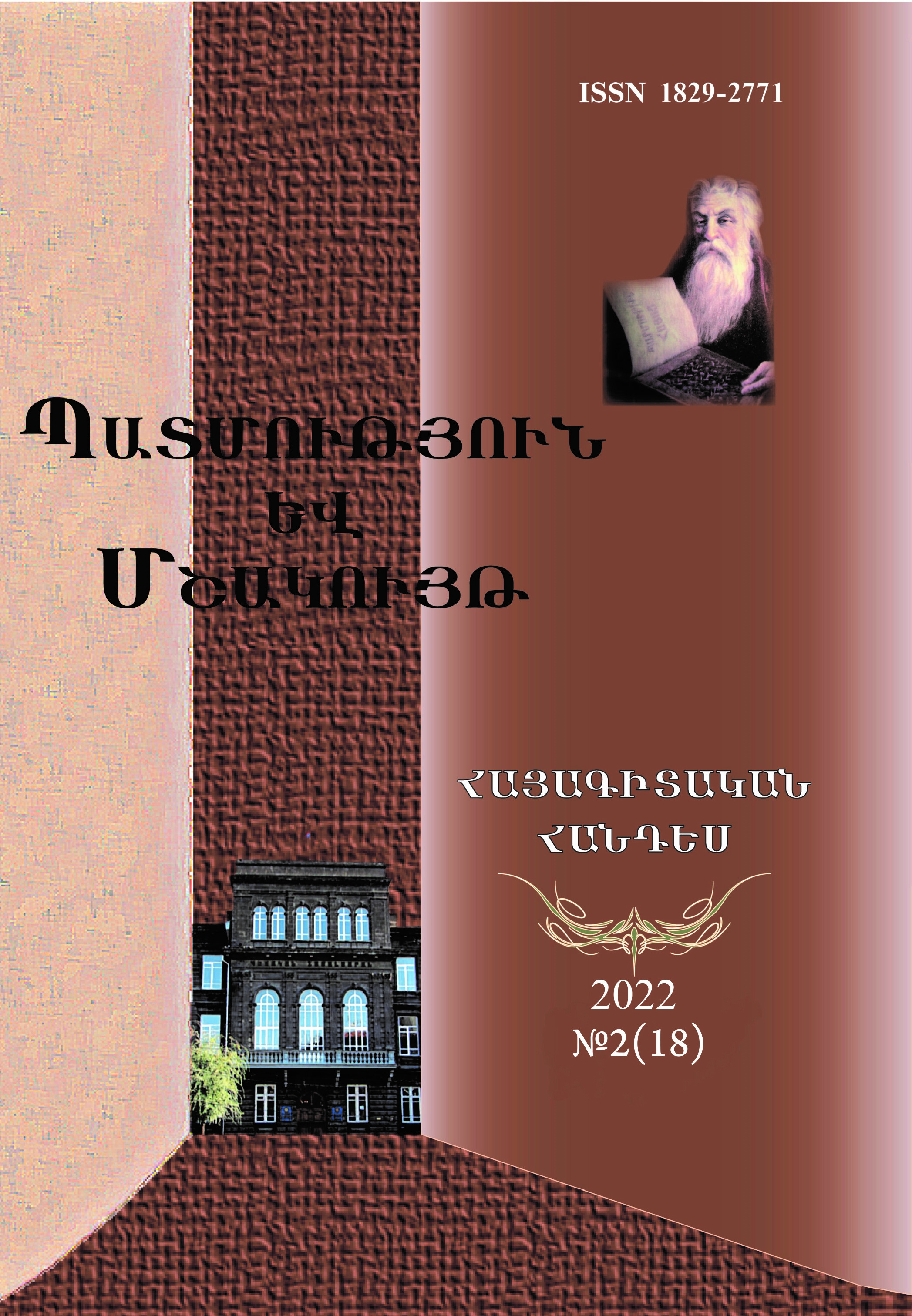Russian-Armenian Agreement of August 10, 1920 and Military-Political Position of the Representations of the European Countries in Transcaucasia and the Republic of Armenia
DOI:
https://doi.org/10.46991/hc.2022.18.2.73Keywords:
Republic of Armenia, agreement, Russia, Entente, Turkey, allies, Treaty of SevresAbstract
The Russian-Armenian treaty of 1920 was a test for Armenia in relations with its allies. Not wanting to lose Armenia as a bulwark against Bolshevism, the Allies took this agreement is in shambles.
The policy of the Armenian government was twofold; its inclination towards the West was obvious, because on the same day the Treaty of Sevres was signed, which left its mark on the agreement of August 10.
In fact, the agreement of August 10, 1920 was one of the successful diplomatic maneuvers of the Soviet side, since with it the issue of “disputed” territories was removed from the sphere of diplomacy of the Western powers.
Actually, the European “allies” of Armenia, dissatisfied with the agreement of August 10, were interested in Armenia only as an anti-Russian shield. In such a hopeless situation, the government of the Republic of Armenia responded to the coercion of Bolshevik Russia by temporarily transferring those territories to Russia, since there was a somewhat naive hope of returning these territories in the future, which was completely excluded if they were captured by Turkey.
References
Alikhanyan S. (1974), G. K. Ōrjonikidzen ew Sovetakan kargeri hastatumě Hayastanum, Erewan, «Hayastan» hrat., 248 ēj: (in Armenian)
Galoyan G․ (1999), Hayastaně ew mets terut‘yunnerě 1917-1923 t‘t‘., KHmb.՝ G. Galoyan ew urish., Erewan, HH GAA Patmut‘yan inst-t, 539 ēj։ (in Armenian)
Khurshudyan L․ (2017), Hayastani bazh’anumě 1920 t‘vakanin, Erewan, EPH hrat․, 352 ēj:
Hayastani Hanrapetut‘yuně 1918-1920 t‘t‘ (2000), (k‘aghak‘akan patmut‘yun), p‘astat‘ght‘eri ew nyut‘eri zh’oghovatsu, Erewan, HH GAA «Gitut‘yun» hrat․, 455 ēj: (in Armenian)
Hayastani Azgayin arkhiv (HAA), f. 200, ts‘. 1, g. 607, t‘. 29-31, 35-37, 149-154: (in Armenian)
HAA, f. 368, ts‘. 1, g. 18, t‘. 2, 8, 16-17, 23, 34։ (in Armenian)
Hovhannisyann Ṛ. (2005), Hayastani Hanrapetut‘yun: Hator I․ Aṛajin Tari․1918 -1919. Erewan, «Tigran Mets» hrat., 604 ēj. (in Armenian)
Hovhannisyan Ṛ. (2015), Hayastani Hanrapetut‘yun, Hator IV, Sali ew mangaghi mijew. Masnatum ew khorhrdaynats‘um, Erewan, «Tigran Mets» hrat. , 572 ēj: (in Armenian)
«Yaṛaj», 1920, 5-6 hoktemberi, Erewan: (in Armenian)
Nersisyan A. (2007), Ṛuben : [Ṛubēn Tēr-Minaseani kyank‘n u gortsuneut‘yuně] / A. Nersisean; Aṛajab.՝ A.Melk‘onean; KHmb.՝ Ē. Minasean. Erewan, Ēdit‘ Print, 394 ēj: (in Armenian)
Simonyan A. (2000), Zangezuri goyamarttě (1920-1921 t‘t‘.), Erewan, Erewani hamals. hrat., 672 ēj: (in Armenian)
Simonyan A. (2017), Zangezuri goyapayk‘arě 1917-1920 t‘t‘., A. Simonyan, - Erewan, EPH hrat., 2017, 742 ēj: (in Armenian)
Vrats‘yan S․ (1993), Hayastani Hanrapetut‘yun, Erewan, «Hayastan» hrat․, 704 ēj։ (in Armenian)
Tumanjan M. (2012), Diplomatichjeskaja istoрija Рjes¬publiki Aрmjenija. 1918-1920 gg., JEрjevan, Nacional’nyj aрxiv Aрmjenii, 404 s. (in Armenian)
Downloads
Published
Issue
Section
License
Copyright (c) 2022 Vanik Hrant Virabyan

This work is licensed under a Creative Commons Attribution-NonCommercial-ShareAlike 4.0 International License.

